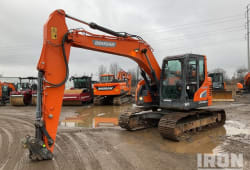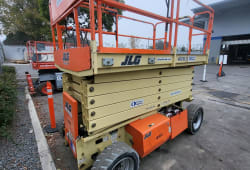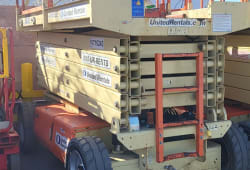House Construction 2025: Step-by-Step Guide, Planning, Work & Updated Costs
5 Min read
)
July 27, 2025
Building a home is one of the most exciting-and significant-investments you can make. With the evolution of materials, technologies, and planning tools, house construction in 2025 has become more efficient, sustainable, and tech-driven than ever before. Whether you're a first-time homebuilder or looking to upgrade your current living space, understanding the full process is essential.
In this guide, we’ll walk you through the house construction step by step process, what kind of house construction work is involved, how to create a smart house construction plan, and what to expect in terms of house construction cost in 2025.
House Construction 2025: What’s Changed?
In 2025, residential construction is being reshaped by new trends:
Sustainable materials like recycled concrete, bamboo, and insulated panels are widely used.
Smart home integrations (IoT, automation, solar panels) are now common during initial construction phases.
AI-powered tools are helping architects and contractors design and schedule projects faster and with fewer errors.
Modular and prefabricated home construction is growing due to time and cost savings.
If you're planning to build in 2025, taking advantage of these innovations can reduce delays, improve quality, and boost energy efficiency.
House Construction Step-by-Step Process
:format(webp))
A successful home build follows a clear sequence. Here’s the complete house construction step by step process:
1. Site Preparation & Permits
Clear land, level the ground
Conduct soil testing and secure permits
2. Foundation Construction
Pouring the slab or basement
Installing reinforcements and drainage systems
3. Framing
Build the skeleton of the house (walls, floors, roof trusses)
Install windows and doors
4. Roofing & Exterior Work
Apply roofing materials (shingles, tiles, metal)
Finish exterior siding or cladding
5. Rough Plumbing, Electrical & HVAC
Run internal pipes, electrical wiring, and ductwork
Prepare for future inspections
6. Interior Finishes
Insulation, drywall, painting
Flooring, cabinetry, countertops, and fixtures
7. Final Inspections & Handover
Building inspection and final walkthrough
Install appliances and finalize landscaping
Understanding House Construction Work
The house construction work involves a coordinated effort between various professionals and skilled trades, including:
Architects & Engineers - Create structural plans and ensure building codes are met
Contractors - Manage construction teams and schedule
Laborers, Carpenters, Electricians, Plumbers - Handle on-site tasks
Working with a trusted team is crucial to ensure that every phase-from excavation to electrical work-is completed efficiently and safely.
Creating an Effective House Construction Plan
:format(webp))
Having a solid house construction plan is one of the most important steps in a successful project. Here’s what it should include:
Blueprints & Design - Choose between pre-designed models or work with a designer for a custom layout.
Timeline - Set clear deadlines for each phase of construction.
Budget - Break down costs for materials, labor, permits, and extras.
Contingency - Always allocate an extra 10-15% for unforeseen expenses.
Permits & Legalities - Research local regulations to avoid delays or fines.
Use digital planning tools like CoConstruct, Buildertrend, or Houzz Pro to keep everything organized in real-time.
House Construction Cost in 2025
One of the most common questions: How much does house construction cost in 2025? Here’s a breakdown:
Average Cost Per Square Foot
Basic build: $120-$180/sq. ft.
Mid-range custom home: $180-$250/sq. ft.
High-end or smart home: $250-$350+/sq. ft.
Key Cost Factors
Location: Urban builds tend to be pricier than rural
Materials: Green or smart materials can increase costs upfront but save in the long run
Labor: Skilled labor shortages in 2025 may drive up rates in certain areas
Extras: Landscaping, pool installation, and smart tech can significantly boost costs
Example:
A 2,000 sq. ft. mid-range custom home may cost between $360,000 and $500,000, depending on features and location.
Tips for a Successful House Construction in 2025
To ensure your build goes smoothly, follow these tips:
Hire licensed professionals and verify credentials
Get multiple bids before choosing a contractor
Stick to your plan but remain flexible to adapt if needed
Schedule regular site visits to stay informed
Ask for green or smart tech rebates offered in your area
FAQ: House Construction 2025
Q: How long does it take to build a house in 2025?
A: Typically 6 to 12 months, depending on size, weather, permits, and customizations.
Q: What is the most expensive part of house construction?
A: Framing and finishes usually make up the largest chunk of the budget, followed by HVAC and plumbing.
Q: Can I save money by managing the construction myself?
A: You can, but it requires deep knowledge, excellent organization, and contractor connections. Risks are higher if you're not experienced.
Q: Are prefab homes cheaper in 2025?
A: Yes, prefab and modular homes are usually 10-20% cheaper and can be built faster.
Final Thoughts
House construction in 2025 combines smart planning, innovative materials, and modern tools to make building a home more achievable and efficient than ever before. By understanding the step-by-step process, knowing what construction work to expect, and planning for realistic costs, you'll be better prepared for a successful project.
Whether you're building your dream home or investing in property, it all starts with a smart plan. Ready to get started?

Rex Walz is Boom & Bucket's Manager of Supplier Relations, bringing over a decade of experience in B2B sales and heavy equipment solutions. With a background spanning government, construction, industrial, and commercial sectors, he has a proven track record of driving growth and building trusted customer relationships. At Boom & Bucket, Rex is passionate about helping partners succeed while advancing the company's mission to create the most trusted marketplace for heavy equipment.














